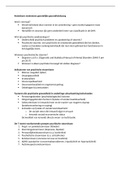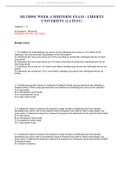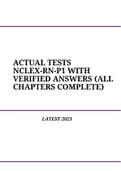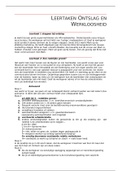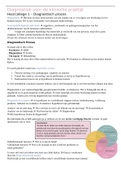Tentamen (uitwerkingen)
Test Bank For Integrated Cardiopulmonary Pharmacology 5th Edition By Bruce Colbert, Luis Gonzalez ( ) / 9781517805067 / Chapter 1-15 / Complete Questions and Answers A+ Latest Updated Version 2024
- Vak
- Instelling
Test Bank For Integrated Cardiopulmonary Pharmacology 5th Edition By Bruce Colbert, Luis Gonzalez ( ) / 9781517805067 / Chapter 1-15 / Complete Questions and Answers A+ Latest Updated Version 2024 Get ready for your nursing exams with the Test Bank For Integrated Cardiopulmonary Pharmacolog...
[Meer zien]




